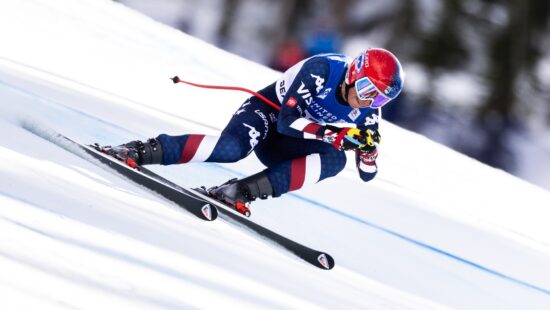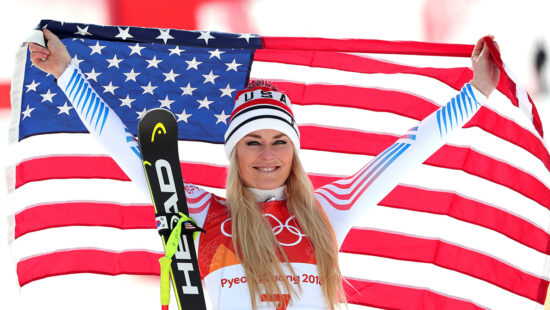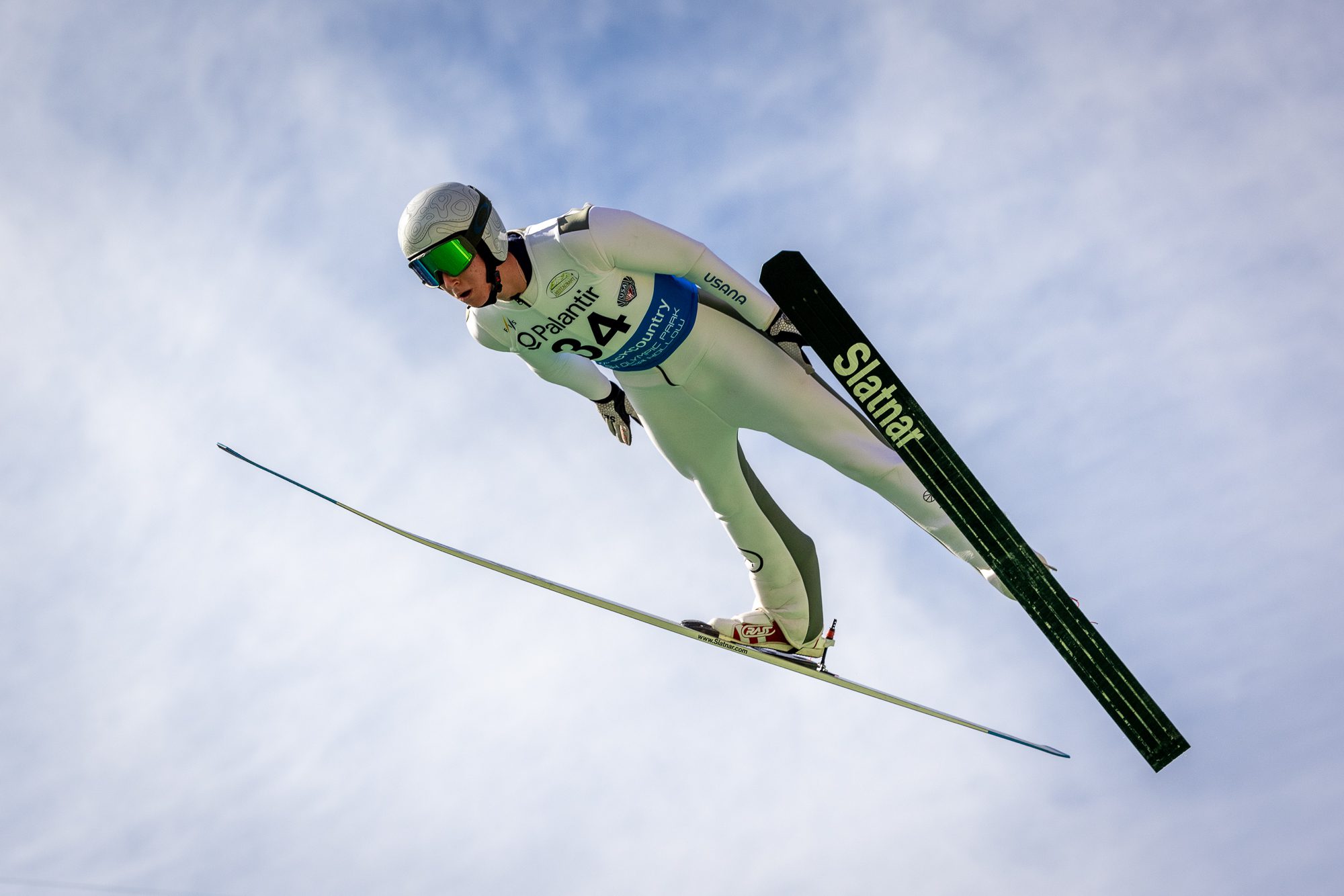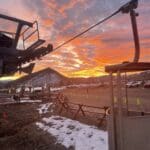Sports
A day in the life: U.S. Ski and Snowboard wax tech
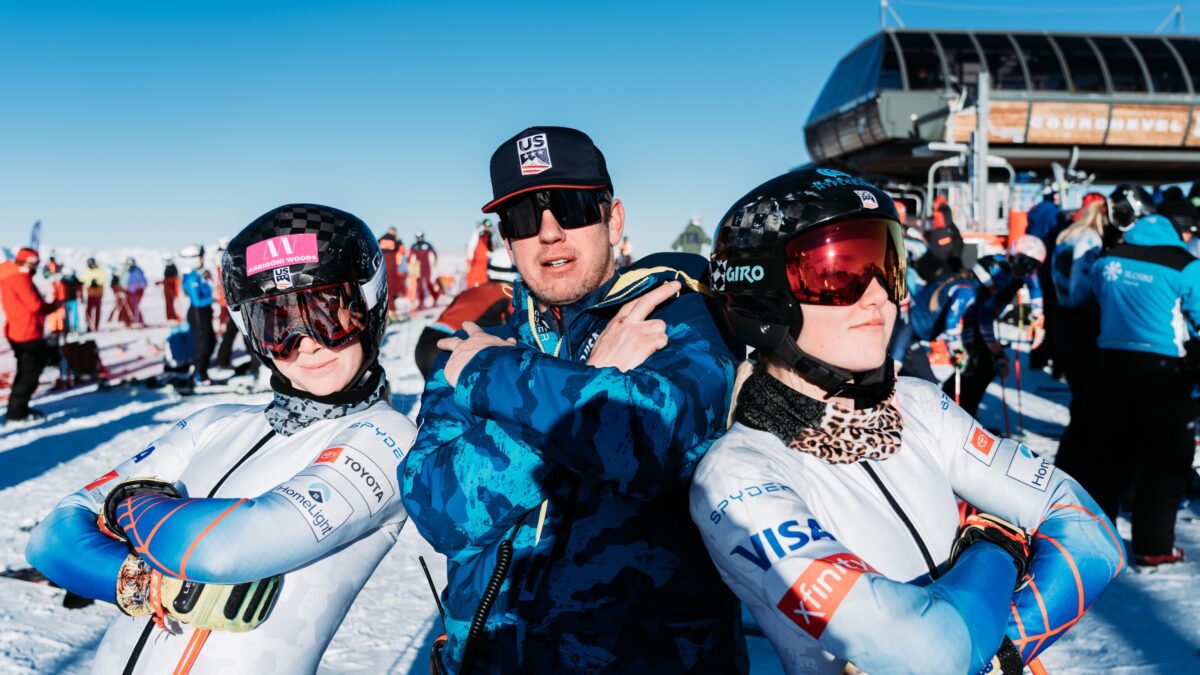
Bart Mollin, not taking himself too seriously after preparing the skis of the U.S. Ski and Snowboard alpine racers he's standing between. Photo: courtesy of U.S. Ski and Snowboard
PARK CITY, Utah — On Sunday, Snowbird signaled ski season’s swan song. On Monday, hard working U.S. Ski and Snowboard wax tech Bart Mollin can finally start to enjoy the warm weather, but only until the snow flies again.
Mollin is merely one of the the U.S. Ski Team current 12 ski techs, as they are also known by, for men, and 11 for women.
Starting his sixth season in the fall, he told TownLift, “I’m not sure what background other techs have, I’ve been racing pretty much my whole life so I knew I’d end up in the ski racing scene somehow.”
Asked what time his alarm clock is for on the morning of a World Cup/World Championship/Olympic Games race day, he said he always makes sure everything is done and ready to go the night before as this narrows the chances of being stressed in the morning. “One hour prior to departure is what I set my alarm to, I’m a proud member of the under 10-minute breakfast club so I have plenty of time.”
Every athlete has specific preferences as it come to tuning, the longer they work together the better they know the athlete and their style of skiing. It’s a process that takes some time, once everything is dialed in they keep changes to a minimum. Length, weight and the way an athlete is built also affects the setup.
“The goal is to have a set up that they feel confident on; easy to ski yet aggressive when needed,” Mollin said. “I’d like to have a fresh pair for max two training runs, so on an average I would prep five to six pairs per athlete for a day of training. If conditions are very icy, it’s max one run per pair so that means long days in the ski room. Once we find skis that work better than others we put those aside for racing. Ideally, we have five good race pairs at all time, if one breaks we need to work another pair to replace them.”
For a tech racer, a minimum ten pairs of skis per event in good shape and same model is what they travel with. If they’re testing models, Mollin said, “it happens that I have 25 pairs for one event in the back of my van.”
Curious as to whether there’s a sense of camaraderie or competition among the counterpart international ski techs, he said that it’s a scene where you see the same people at every race, most trainings and even in between during travels. “Of course, we all want to have the best results, but it’s a very friendly environment where everyone is ready to help each other out.”
The main task for a tech is to be always around the athlete without being too noticed by them. That’s how Mollin described his job once the race has started. Just be there whenever they need something and make sure the equipment is 100%.
Talk turned to weather. He uses a classic snow thermometer for snow temp and various weather apps the days prior to the race. They get snow reports from wax companies too, usually they’re done waxing by the time they stop by and always are spot on. The wax manufacturing company representatives stop by in the ski room at every race. “If there is something new, we know it first.”
They also work very close with the ski brands, they need feedback about the equipment to constantly improve and find the best possible set up for every racer.
It certainly doesn’t hurt that Mollin speaks multiple languages besides English, those being French, German and Dutch (Flemish).
Growing up, his dad used to race and is the inventor of indoor skiing, therefore, “I had no other choice,” he smiles, when answering if he grew up ski racing.
Anecdotally, he recounts what is now, some years later, what he can refer to as a humorous story.
“My first spring camp with the team I drove from San Francisco to Squaw Valley Road in Fresno, when I almost got there I started doubting if I was going the right way to Squaw Valley (the ski resort) when suddenly I overtook an RV that had a massive “SKI SQUAW” sticker on the back window. I guess I should’ve turned on the data on my phone a little earlier, would’ve saved me a 300 mile detour.”
While it’s true that alpine ski racing is an individual endeavor, Mollin’s organic appreciation for the team aspect of the sport shines through as he tells TownLift about the best part of his important job. “The feeling you get when your athlete performs well, the respect you get from your athlete, of course it feels nice when they mention that the skis worked very well. But all credits must go to the racer, the best skier will win on any set up.” It’s a mutual admiration society.















